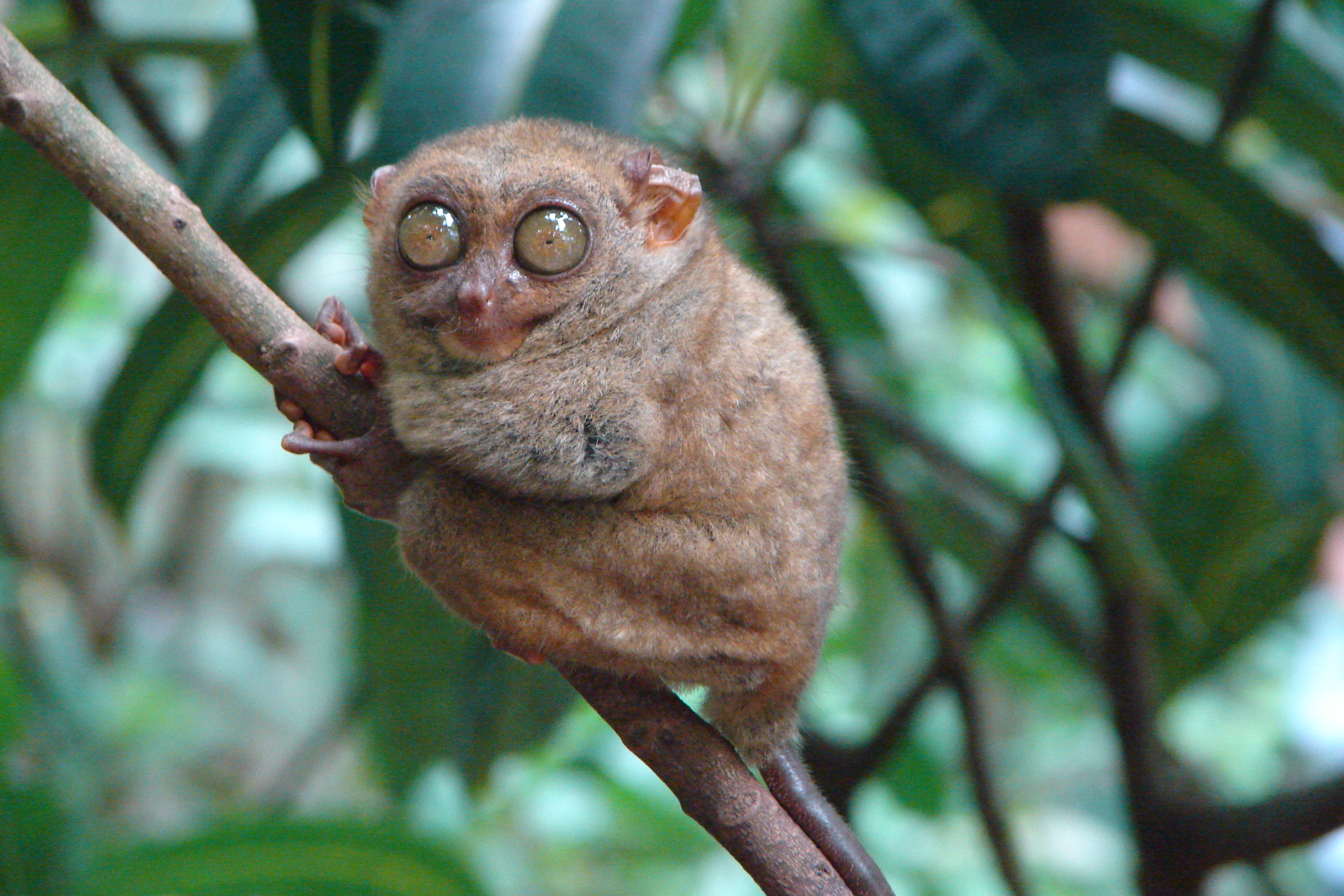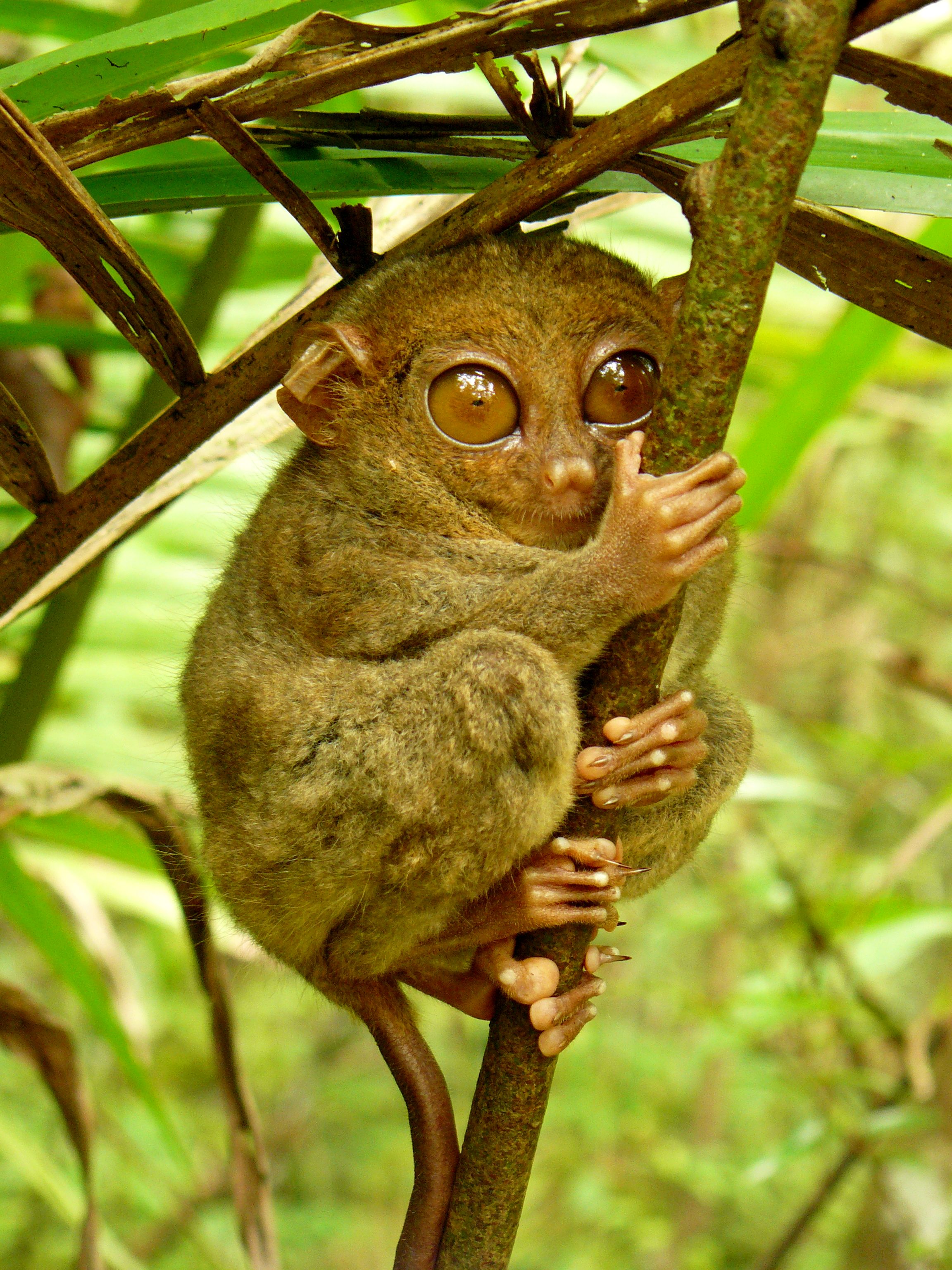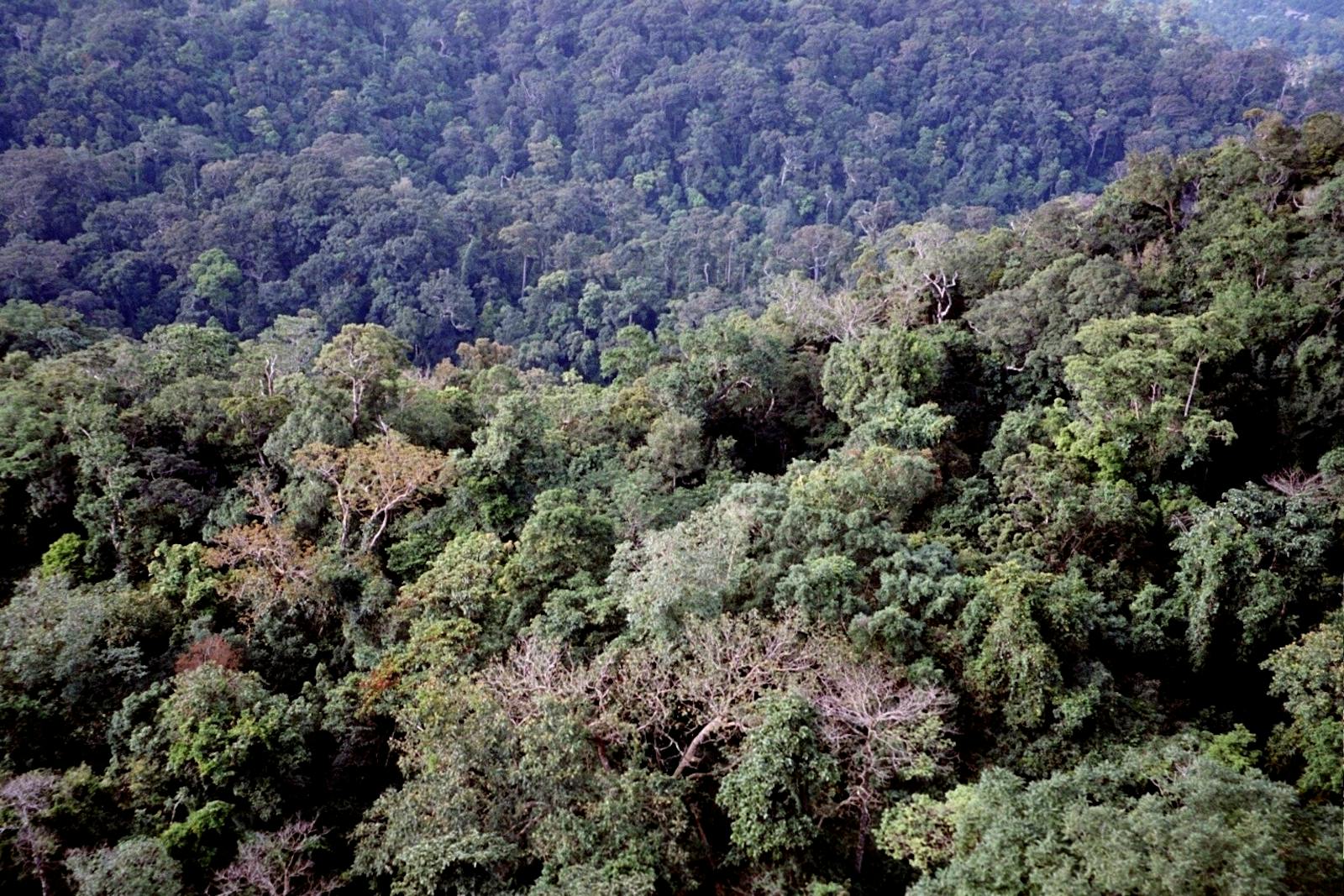Mindanao-Eastern Visayas Rainforests
The ecoregion’s land area is provided in units of 1,000 hectares. The conservation target is the Global Safety Net (GSN1) area for the given ecoregion. The protection level indicates the percentage of the GSN goal that is currently protected on a scale of 0-10. N/A means data is not available at this time.
Bioregion: Philippines & Sulu Sea Tropical Forests (IM15)
Realm: Indomalaya
Ecoregion Size (1000 ha):
10,534
Ecoregion ID:
247
Conservation Target:
50%
Protection Level:
2
States: Philippines
The Philippine tarsier has been described as a ‘very peculiar small animal’ because of its ‘teeny tiny body, bat-like ears and bug eyes’. While described as the ‘the world's smallest monkey’, it is in fact not a monkey, but rather more closely related to another group of primates that includes bush babies, lorises, and lemurs. Nevertheless, it is indeed small, just about 15 cm small and weighing a mere 150 g. After surviving for 45 million years in the forests of the Greater Mindanao islands, the tarsier is now vulnerable to extirpation from deforestation, logging, collection for the tourism trade, and its own low birth rate.

The flagship species of the Mindanao-Eastern Visayas Rainforests ecoregion is the Philippine tarsier. Image credit: Creative Commons
The Mindanao–Eastern Visayas Rainforests ecoregion covers the lowland forests below 1,000 m in elevation, on the Philippine islands of Mindanao, Samar, Leyte, Bohol, and several smaller satellite islands. During the Pleistocene-era ice age over 10,000 years ago, the islands of Mindanao, Samar, Leyte, and Bohol were all one island that formed the Greater Mindanao Island, as the lowering sea levels created land bridges between the smaller islands. The climate is tropical and wet. The northern Visayas, i.e. the northern portions of Samar and Leyte islands, are on the main track of typhoons that occur from July to November.
The forest vegetation consists of beach forest and mangroves along the coast, and lowland rain forest inland. The beach forests are dominated by Casuarina and Barringtonia trees. The lowland forests are dominated by species of Dipterocarpaceae, including Anisoptera thurifera, Dipterocarpus gracilis, D. validus, Hopea acuminata, H. malibato, H. philippinensis, H. plagata, Parashorea malaanonan, Shorea almon, S. assamica, S. astylosa, S. contorta, Shorea falciferoides, S. guiso, S. palosapis, S. polysperma, and Vatica mangachapui that form the canopy, and reflect the species richness and diversity of the forest.
Many of these are highly valued as timber trees and are now critically endangered. Other species of the forests community are from Meliaceae, Moraceae, Lauraceae, Sapindaceae, Myrtaceae, Clusiaceae, Sterculiaceae tree families. These dipterocarp-dominated forests are tall, reaching 45 to 65 m in height, with a dense, three-layered canopy. Ferns, orchids, and various other epiphytes add structural habitat in the upper strata, providing micro-habitats that support a diverse fauna.

Philippine tarsier. Image credit: Creative Commons
About 80% of the non-volant mammals are endemics of Greater Mindanao, not even found on Luzon, the adjacent large island a mere 25 km away. Some of the smaller islands within the Greater Mindanao group also have their own single-island endemics. For instance, Dinagat Island just north of Mindanao harbors its own endemic mammals, such as the Dinagat bushy-tailed cloud rat. Two subspecies of the endemic Philippine deer are reported from Mindanao, with Rusa marianna nigella in upland sites and Rusa marianna nigricans in lowland sites, but their taxonomies are still not clearly understood.
The other large endemic mammal in this ecoregion is the Philippine warty pig. The ecoregion overlaps with the Mindanao and Eastern Visayas Endangered Bird Area, designated for the 51 restricted-range bird species, all of which are forest specialists, such as the threatened Mindanao bleeding-heart. The critically endangered monkey-eating Eagle and Philippine cockatoo still hold out in these forests.
Very little of the ecoregion is under formal protection, and the largest protected area is on Samar Island in the Visayas, while most of the protected areas on Mindanao Island is in the mountains. Meanwhile, several Key Biodiversity Areas (KBAs) especially on Mindanao are unprotected. Hunting, including for small endemic species, is widespread.
Thus, the recommended priority conservation actions are to: 1) expand the protected areas system to improve its representation and to include the unprotected KBAs; 2) implement education and awareness campaigns on biodiversity conservation and alternative livelihood opportunities (to hunting and forest clearing) for local communities; and 3) engage local communities as conservation stewards.
Citations
1. Philippine Biodiversity Strategy and Action Plan. 2015-2028. Department of Environment and Natural Resources. https://www.cbd.int/doc/world/ph/ph-nbsap-v3-en.pdf downloaded 16 March 16, 2018
2. Langenberger, G., Martin, K. and Sauerborn, J., 2006. Vascular plant species inventory of a Philippine lowland rain forest and its conservation value. In Forest Diversity and Management (pp. 211-241). Springer, Dordrecht.
3. Wikramanayake, E, E. Dinerstein, et al. 2002. Terrestrial Ecoregions of the Indo-Pacific: A Conservation Assessment. Island Press.



